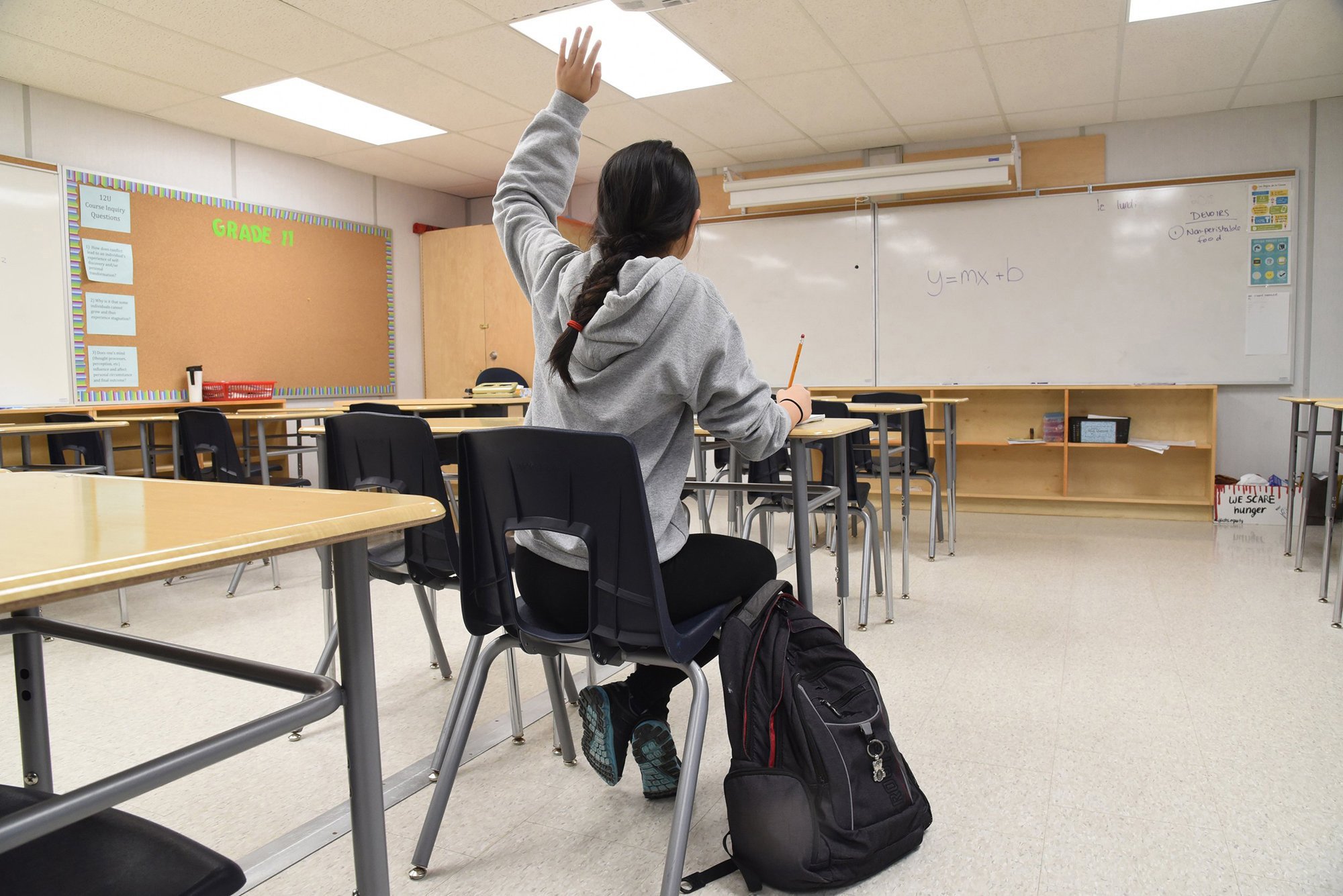
The recent spike in child respiratory illnesses is worrisome and taking its toll on K-12 classrooms in most school districts. Classrooms with empty desks are easy to spot in December 2022 and a tell-tale sign that the ‘tridemic’ is adversely affecting students, teachers and families. It’s also an ominous sign that the worst may be yet to come, since January and February tend to be the peak months for seaonal flu outbreaks in Canada.
Among the first to blow the whistle were Nova Scotia public school teachers. For two weeks or more in late November, classroom teachers were reporting record student absenteeism, ranging from 30 to 50 per cent of students in some schools. Newly-elected Nova Scotia Teachers Union (NSTU) president Ryan Lutes voiced public concerns but his plea fell on deaf ears.
Teachers represented by the Nova Scotia Teachers Union finally took it to the N.S. Legislature’s Human Resources Committee on November 29 decrying rates of absenteeism, working conditions, and the lack of substitute teachers. Once again, Education Minister Becky Druhan remained silent, leaving senior education officials scrambling to explain it all away.
High rates of student absenteeism are not uncommon during flu season, but this outbreak comes on top of two- and-a-half years of pandemic interrupted education. What’s shocking is that Nova Scotia’s Education Department remained in denial, suspended in some kind of never-never land. It took a media firestorm to attract their attention.
It’s now a serious matter, so where is the actual data and how does it figure in the larger issue of the long-term impact of the prolonged pandemic education crisis on the quality of education in our schools? Someone, somewhere has to connect the dots.
Student absenteeism since the pandemic hit in March 2020 has set new records and severely tested existing provincial attendance guidelines. Current absentee rates far exceed the levels identified as a concern in September 2017 when the province posted its official “Student Attendance and Engagement Policy.”
Back then, missing 16 or more days a year was identified as “chronic absenteeism” and those who missed 25 per cent of class time were considered at academic risk. It’s fair to ask what proportion of students now miss 16 or more days of school and how many exceed the 25 per cent benchmark identified as being “linked to lower marks.”
The current spike in student illness and absenteeism is not an isolated phenomenon. In January and early February of 2022, the Omicron wave decimated class attendance, especially in Cape Breton. Again, in April 2022, The Chronicle Herald reported a major March 21 to 25 rash of absenteeism, ranging in the Halifax area from 12.2 per cent (P-6) to 18.1 (10-12), exceeding normal averages of less than 10 per cent of all students.
Our sister province, New Brunswick, has just released its October 2022 attendance data and the results are not pretty. Students in that province are missing more school days than ever before since COVID-19 hit. The average N.B. student misses 16 or more school days a year and so most students, statistically speaking, now qualify as examples of “chronic absenteeism.”
Outbreaks of student absenteeism because of illness are now visible elsewhere. The latest school district to report in is Ontario’s Hamilton-Wentworth District School Board. Up to 20% of that district’s public school students were out with illness on certain days in November 2022 and many are reportedly “falling behind” in their studies. That’s at least double the absenteeism rate in 2020 (five to 10 per cent). In high schools, absentee rates range from 8% to 14%, compared to 3% to 4 % two years ago. Staff absences for personal illness are also up, to nearly 16 days each, from 13 to 15 before the pandemic.
Students are staying home for lots of reasons. Since COVID-19 hit children and teens were encouraged to stay home if they had symptoms of the virus. Parents of immuno-compromised are essentially home-schooling their kids out of fear that contagion run rampant in local schools. Some students and many teachers are totally frustrated by the constant upheaval and questioning the value of attending classes, best with ongoing interruptions or full of empty desks.
Education authorities and faculties of education have been, until recently, absent on the subject of absenteeism. Across Canada, from-province-to province, education authorities have been essentially flying blind because absenteeism is a neglected research field. A recent Canadian Journal of Education article (2021), written by University of Ottawa researcher Anton Birioukou, pointed out that “the lack of empirical knowledge” concerning student absenteeism was “a contributing factor to the high levels of absenteeism evident in Canada.”
It all brings to mind the old Japanese proverb of the three wise monkeys: “see no evil, hear no evil, speak no evil.” In dire circumstances, it’s tempting to turn a blind eye to an entrenched problem.
American research on student absenteeism, much of it generated by Professor Christopher Kearney of the University of Nevada, is instructive and deserves more attention. He is the leading expert on what is known as “school refusal behaviour” exhibited by students who resist or skip school even when they are otherwise healthy.
Specialists in the field like Kearney have identified many, sometimes interrelated root causes. It starts with the student (i.e., boredom/ lack of interest or health issues); the home (familial neglect, lack of support for schooling); the school (poor school climate, unmet educational needs); and society (poverty and the need to supplement family income).
While occasional absences are expected, especially among teens, regular and recurring absences exceeding three weeks of school time are detrimental to students’ learning, academic progress and social well-being. Yet there’s lots of evidence that since the great pandemic disruption high levels of absenteeism are being normalized in provincial school systems.
Pandemic school disruptions have significantly altered the educational context, largely as a result of massive and mostly unplanned experiments in emergency remote learning. Public faith in school attendance has been shaken. It’s likely that student “seat-time” and conventional grade promotion may not ultimately be the only basis for assessing levels of student engagement in learning.
Rows of empty desks are impossible to ignore, but we would be unwise to embrace unproven alternatives. While “seat-time” may have its imperfections, alternatives need to pass the ‘sniff-test’ – and provide meaningful student accountability or credible means of assessing academic expectations, securing course credits, and acquiring diplomas. If we are truly committed to ‘keeping kids in school’ in the post-pandemic era, then we had better make a concerted effort to reduce the numbers of empty desks in those schools.
Why were Canadian schools caught off-guard and so ill-prepared for the most recent surge in student absenteeism? Why have our education researchers been so “absent on absenteeism” and what does it suggest about their priorities? Have pre-COVID student attendance/absenteeism benchmarks been abandoned out of necessity?

















